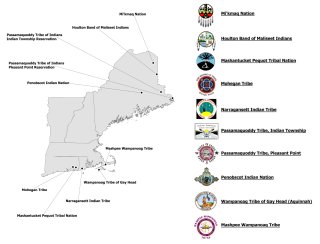Region 1 Tribal Program
EPA Region 1 is committed to helping tribes strengthen their abilities to manage environmental programs in Indian country, and to ensure that tribes have a voice in decisions that affect their land, air and water. The Region serves 10 federally recognized tribes within the New England states of Maine, Massachusetts, Connecticut and Rhode Island.
- Regional Tribal Operations Committee (RTOC)
- The Indian General Assistance Program (GAP) in Region 1
- Tribal Consultation Procedures for Region 1
- Federally Recognized Tribes in Region 1
Regional Tribal Operations Committee (RTOC)
The Regional Tribal Operations Committee (RTOC) meets monthly by teleconference and provides a forum for discussion of environmental issues among the Region's tribal coordinators, media liaisons, and each of the tribes' Environmental Program Staff representatives. The New England Region's Tribes are represented at the National Tribal Operations Committee (NTOC) by designated Tribal Environmental Program representatives and the Regional Administrator or designee. The National Tribal Caucus (NTC) is an important working group also represented by the region's delegate and alternate as the New England tribes' representatives.
The Indian General Assistance Program (GAP) in Region 1
GAP is guided by the Guidance on the Award and Management of General Assistance Agreements for Tribes and Intertribal Consortia.
For region-specific information, contact the Region 1 GAP Program Lead:
Stacey Johnson-Pridgeon (johnson.stacey@epa.gov)
(617) 918-1552.
Tribal Consultation Procedures for Region 1
Under the EPA Policy on Consultation and Coordination with Indian Tribes, EPA consults on a government‐to‐government basis with federally recognized tribes. For more specific guidelines on consultation with tribes in Region 1, see the regional procedures below.
Federally Recognized Tribes in Region 1
- Houlton Band of Maliseet Indians
- Narragansett Indian Tribe
- Passamaquoddy Tribe of Indians - Indian Township Reservation
- Passamaquoddy Tribe of Indians - Pleasant Point Reservation
- Penobscot Indian Nation
- Mashantucket Pequot Tribal Nation
- Wampanoag Tribe of Gay Head (Aquinnah)
- Mi'kmaq Nation
- Mohegan Tribe
- Mashpee Wampanoag Tribe
Region 1 Tribal Contact
Matthew Hanington (hanington.matthew@epa.gov)
Region 1 Tribal Program Coordinator
617-918-1723
EPA Region 1 - New England Tribal Leaders and Environmental Contacts (pdf) (268.63 KB, August 21, 2025)
Region 1 Tribal Lands

Indian Lands in US EPA Region 1 (pdf) (1.03 MB)
Additional Resources
- Region 1 Tribal Nonpoint Source Programs - Celebrating New England’s Tribal 319 Nonpoint Source Program Efforts (pdf) (6.56 MB)
- Regionally Applied Research Efforts (RARE) Report titled "The Penobscot River and Environmental Contaminants: Assessment of Tribal Exposure Through Sustenance Lifeways"
- National Historic Preservation Act (NHPA) Cultural Resources Manual (pdf) (4.01 MB, July 2013)
- Wabanaki Traditional Cultural Lifeways Exposure Scenario (pdf) (2.08 MB, July 9, 2009)
